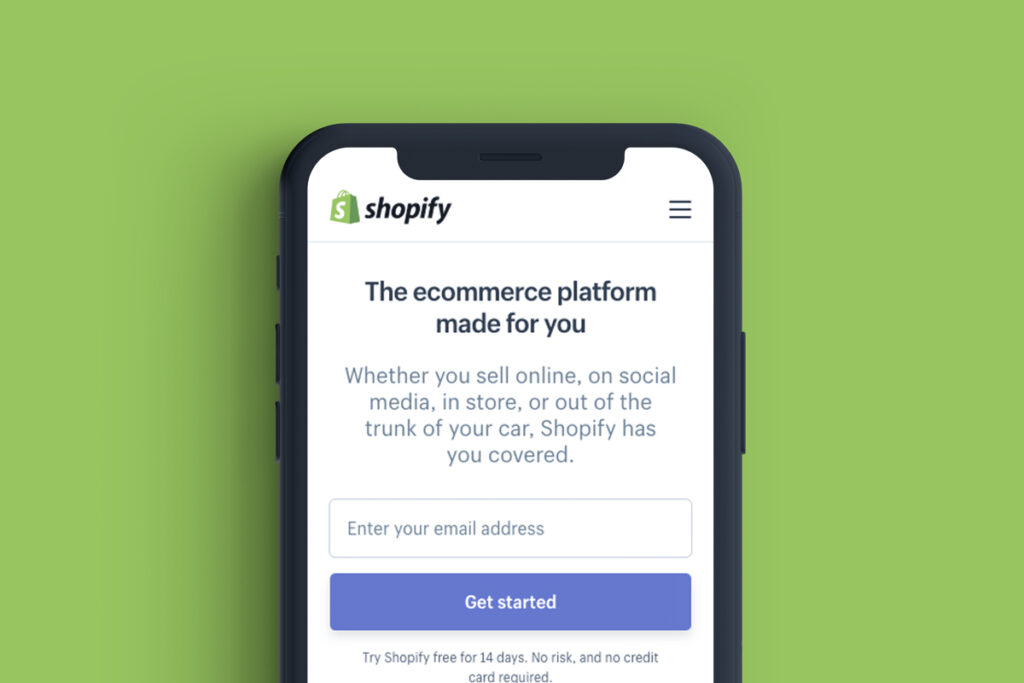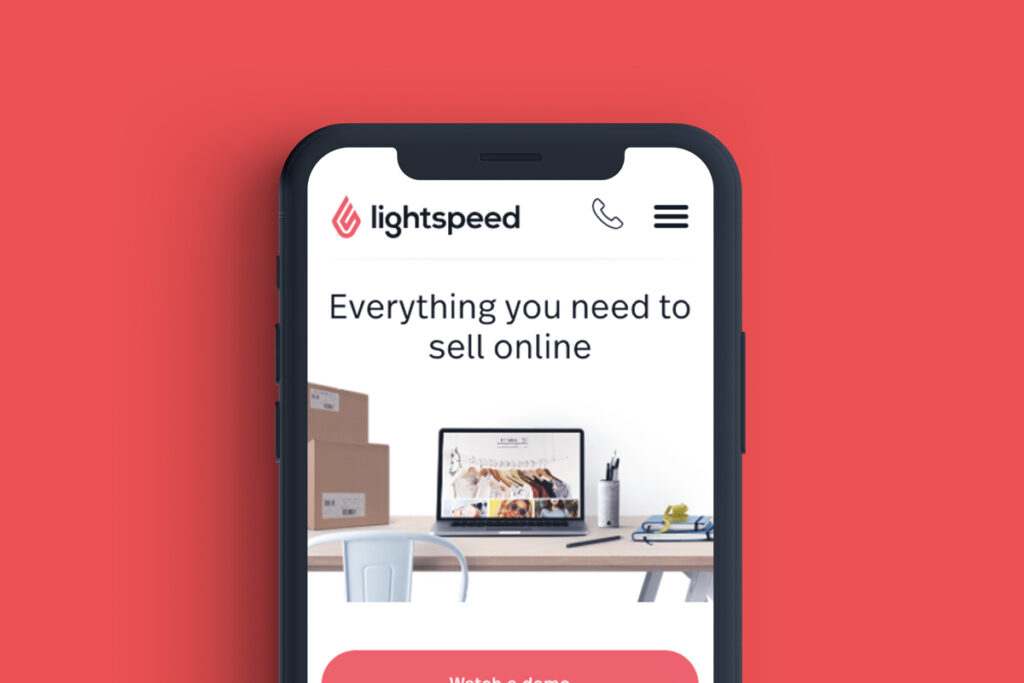Deciding what eCommerce platform to commit to for your online store can be an overwhelming decision for merchants, so our aim here is to simplify your options and explain the advantages and disadvantages of each.
There are literally hundreds of eCommerce platforms on the market – but we rarely, if ever, recommend outside of these five:
Top 5 Ecommerce Platforms
(In no particular order)
The reason for that is because these five platforms will meet the needs of most independent retailers and they have the most stability in terms of adoption and support. You can feel very confident that these platforms will be around for a while and stay on the forefront of eCommerce trends.
Let’s look at the advantages and disadvantages of each.
Magento
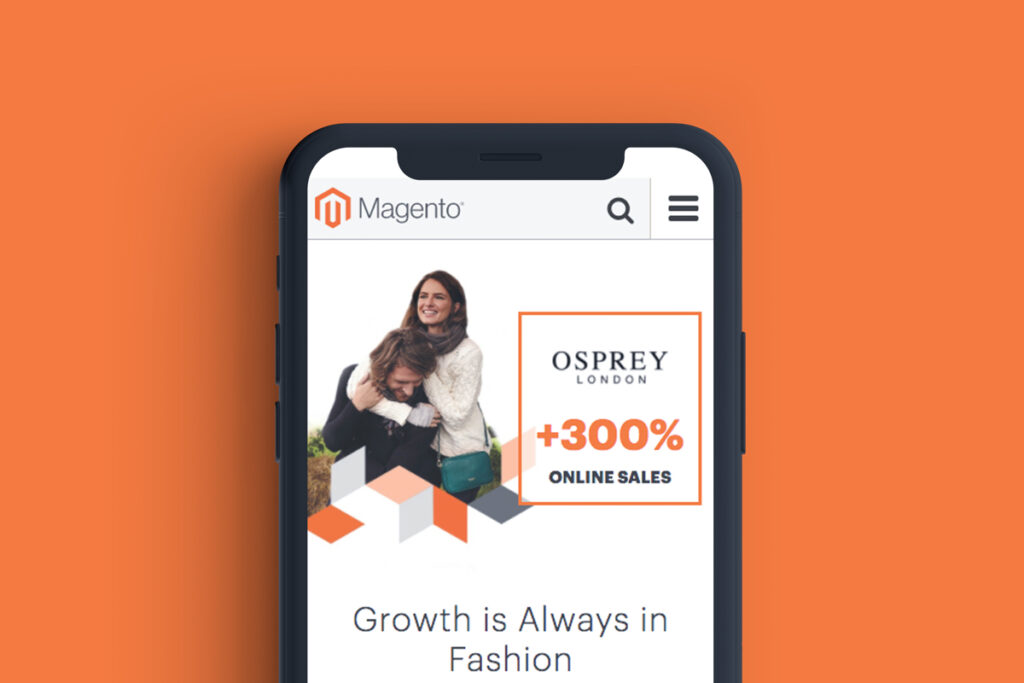
Magento is one of the most scalable platforms for retailers with more intricate needs and high order volume (as in they are fulfilling hundreds of orders per day). Because it is built on open-source software, any developer can extend and customize every piece of the software – from the home page design, to how many variants a product can have, to how much traffic and order volume the site can handle without crashing.
Magento also has been a major player for a long time, so there is a level of stability and maturity that a lot of platforms can’t claim. The community of service providers and developers is big, which would give you plenty of options when looking for a partner to help you build and run your online store.
HOWEVER, with great power, comes great complexity. Magento is not a platform you can just set up and launch without the help of professional designers and developers. Because of this, Magento likely will cost you quite a bit more to build on the front-end.
You will also need to budget several hundred to several thousand dollars a month to host the server, keep the site maintained and secure, and make sure it is optimized to handle customer activity. You essentially are getting yourself into the IT business, and if that’s not your team’s skill set, then you will need to contract out a partner to help.
This is why we reserve our recommendations of Magento for when the retailer expects high order volume or requires a certain level of extendability from the out-of-the-box features that are standard with some of the SaaS platforms like Lightspeed eCom, Shopify and BigCommerce.
Shopify
Speaking of SaaS (or Software as a Service), Shopify is one of the most popular and fastest growing options in the world – and for good reason. Of all the platforms that we’ll cover in this video, Shopify is the leader in terms of getting online quickly with a beautiful looking site that will scale and flex to fit your needs as you grow.
The biggest advantages that Shopify has are:
-
- Their theme store, which has a highly vetted library of both free and paid themes (averaging around $120 as a one-time purchase fee).
-
- Their app marketplace, which gives store owners the ability to leverage the work of other fantastic app developers to add more functionality to their site and integrate with other solutions (like marketing tools and point of sale software).
-
- Because Shopify has become such a popular platform, other software solutions like MailChimp, Salesforce, ShipStation, and even WordPress have made sure that you can easily integrate their tools with Shopify. This means that you are not stuck in a limited ecosystem when piecing together the different systems that your business relies on.
-
- Managed hosting: as is the case for most SaaS platforms, all Shopify stores are hosted for you by Shopify, who has an incredible track record at minimizing downtime (even during Black Friday). This means that you don’t have to worry about your site going down or not being able to handle your customer traffic. Shopify has that all covered for you as a part of the monthly subscription.
- This last advantage is more of an observation that I’ve had working in eCommerce over the last several years. Shopify tends to be ahead of the curve when it comes to adopting the latest eCommerce strategies and best practices for reaching today’s consumers. They were one of the first to add integrations with the Facebook Pixel and Messenger directly into their platforms and their attention to providing one of the smoothest checkout experiences was way ahead of their competitors. Again, this is not to say that you can’t now get these features with other options, but Shopify does tend to be quicker to adapt to the rapidly changing landscape of commerce. For now at least.
Now, before you run off and go sign up for Shopify, it does have some drawbacks that may mean it won’t work for your business.
-
- Variation limit – This is one of the most common hangups that retailers often run into with Shopify. Each product can have a maximum of three options, for example size, color, and style and up to 100 total variants. Let’s say you sell jeans, your options would likely be color, waist size and length. So with your Slim Fit Denim Jeans you may offer 4 colors, 20 different waist size/length combinations (4×20=80 variants), which would keep you within Shopify’s limit of 100. Depending on your product and the required options that you offer, you may run into issues with that limitation. BUT, in some cases, there are workarounds using different apps and custom line item properties that would make it work for you.
-
- Transaction fees – It should come as no surprise that Shopify is in the money-making business. In addition to selling their eCommerce platform, they also offer their own payment gateway, which is the method for collecting payments securely on your site. If you choose not to use their payment gateway, which does end up being the case for many retailers who are already tied to a particular provider for in-store, then with every transaction on your online store, you are hit with a transaction fee of 2%, 1% or 0.5%, depending which plan you are signed up for. That’s NOT including credit card fees, which usually amount to around 3% of the total payment.
If you’re doing a volume of several hundred thousand a year, those fees add up to thousands of dollars. Of course, for many people the benefits that Shopify offers more than make up for that added cost, but it’s something to be mindful of before you get in too deep with them. It’s also worth noting that Shopify does offer a plan called Shopify Plus for merchants that are at a certain scale, which does not include any transaction fees. So it’s good to know that you won’t always be on the hook for that small percentage when you’ve substantially grown your online store.
- Transaction fees – It should come as no surprise that Shopify is in the money-making business. In addition to selling their eCommerce platform, they also offer their own payment gateway, which is the method for collecting payments securely on your site. If you choose not to use their payment gateway, which does end up being the case for many retailers who are already tied to a particular provider for in-store, then with every transaction on your online store, you are hit with a transaction fee of 2%, 1% or 0.5%, depending which plan you are signed up for. That’s NOT including credit card fees, which usually amount to around 3% of the total payment.
- Point of Sale – Shopify does offer its own Point of Sale system that integrates completely with their online shopping cart; however, at this time, Shopify POS still lacks the inventory control and reporting features that most brick-and-mortar retailers need to understand their business. This means that you will need to find a third party point of sale solution that can sync inventory automatically between in-store and Shopify. There are definitely some options out there (ones that we recommend and help set up all the time). Lightspeed is one of our favorite point of sale software, which requires a connector called Accumula to sync inventory and product details with Shopify. You could also look at running all of your inventory control through order management software like Stitch Labs. Either way, this does add some more cost to getting online.
WooCommerce
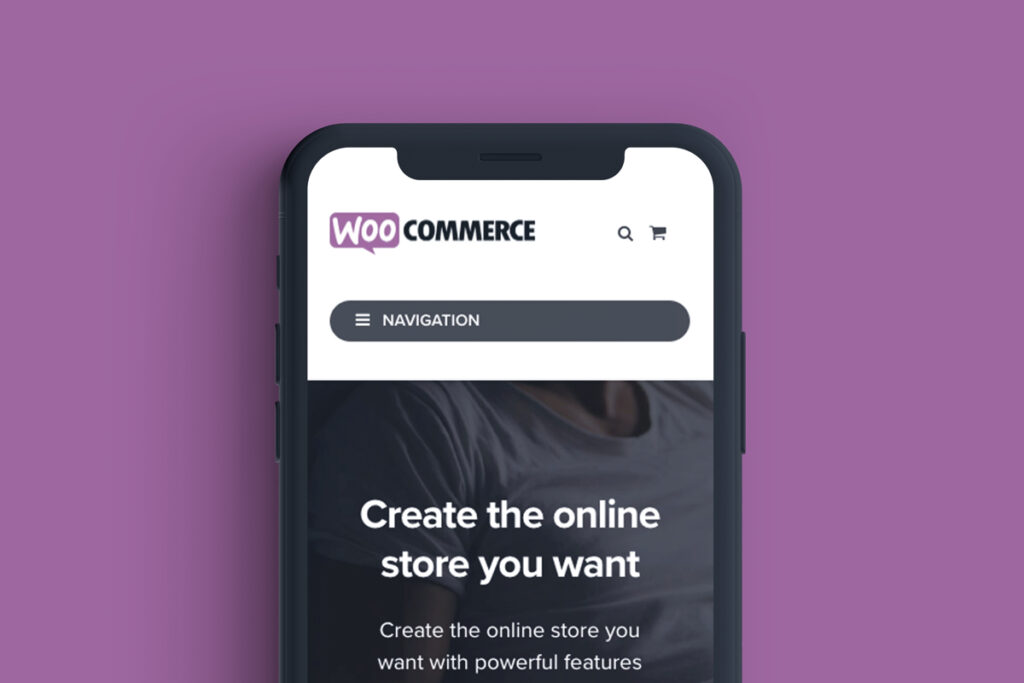
WooCommerce is the top eCommerce plugin for businesses who want to use the WordPress CMS for their website. Like Magento, it is an open-source platform, which means that it comes with a lot of flexibility as well as added costs to host and maintain the site as you scale. If the site is not performing well or the server goes down, you (or your IT company) is on the hook to get it fixed.
I love WordPress. As a content management system, it is the world-leader in how many businesses and individuals are using it and in the developer community that contributes to making it better. WooCommerce benefits greatly from that community, and with it, many businesses are able to build beautiful and very robust online stores.
However, for brick and mortar retailers, WooCommerce just simply does not yet have the same quality of integrations for the more robust point of sale tools, like Lightspeed, Vend, and Springboard. They are starting to catch up in that respect but are not there yet.
If you are set on using a simple point of sale system like Square, then WooCommerce is definitely an option you should consider, purely for the flexibility that it offers and to get the added benefits of being on WordPress.
Lightspeed eCom
As I’ve mentioned already, one of the best point of sale solutions for independent retailers is Lightspeed. Back in 2015, Lightspeed saw the writing on the wall with the rise of eCommerce and SMB-friendly solutions like Shopify on the rise and acquired SEO Shop, which was a very well-known and widely used eCommerce platform. This was so that they could offer their own eCommerce solution that could fully integrate with their point of sale, fulfilling a massive need for brick and mortar retailers.
Lightspeed eCom is the youngest platform of the big five that we’re covering in this video, but you wouldn’t know it just from looking through the features.
Let’s start with the disadvantages:
-
- Because it’s quite new to the game, eCom is not as widely adopted as its competitors. So resources like the app marketplace, 3rd party integrations and pre-designed store themes, as well as the developer community experienced with eCom, are much more limited than what you would find on Shopify. This is really only a disadvantage of the short-term. Lightspeed has made it very clear that they are investing a lot of resources in making eCom a robust tool that can compete with the top players in the market.
-
- If utilizing a blog for content marketing is a big priority for you, then it’s important that you know that Lightspeed eCom has a long way to go before it can be mentioned in the same breath as a CMS like WordPress. Typically, if we have a client that wants to leverage a blog for increasing traffic and sales, we recommend using WordPress and setting that as a subdomain of their main site (e.g. store.yoursite.com). With some front-end design work, you can create consistent look and navigation so that it never feels like they are hoping back and forth between two sites.
- Lastly, when using a pre-built theme to design your store, if you make any customizations to the theme code, you are voiding any future support and updates to that theme. Adding custom CSS is an exception here.
Now having said that, it has been our experience so far that the developers and agencies that created the themes are more than willing to still work with you to answer questions and help troubleshoot issues. Lightspeed’s support are also very gracious and willing to help look at any issues, even related to the theme. So you’re not completely up a creek if something goes wrong, but it does introduce some uncertainty.
You would want to make sure you have a Lightspeed eCom expert that you can call in case of any emergencies.
Now, here are the main reasons you should consider Lightspeed eCom:
-
- The single biggest advantage that Lightspeed eCom has over every other platform is that it completely integrates with their point of sale, Lightspeed Retail. So if that ends up being the tool you use for your stores, then Lightspeed eCom would be a great fit for your online store.
Now if you’re sitting there thinking, “Man Michael, I was really leaning toward Shopify, but we are using Lightspeed for our point of sale. Do I really have to go with eCom?”
The answer is no, you can make Lightspeed and Shopify work together. The best way to do that is using the connector Accumula, which will sync your inventory between in-store and Shopify.
Having said that, you really should give Lightspeed eCom some consideration because of how complete the integration with the point of sale is.
- The single biggest advantage that Lightspeed eCom has over every other platform is that it completely integrates with their point of sale, Lightspeed Retail. So if that ends up being the tool you use for your stores, then Lightspeed eCom would be a great fit for your online store.
- Like Shopify, Lightspeed eCom is a managed solution. So hosting and support are part of the monthly cost to run your online store. This may seem like it’s not that big of a deal, especially if you’re used to hosting a site yourself. But we can’t stress enough how big of a benefit this is for independent retailers. When you reach a certain level of traffic and volume, hosting and managing your site becomes a full-time task. Lightspeed eCom will handle that all for you, likely at a fraction of the cost of you hiring that out yourself.
BigCommerce
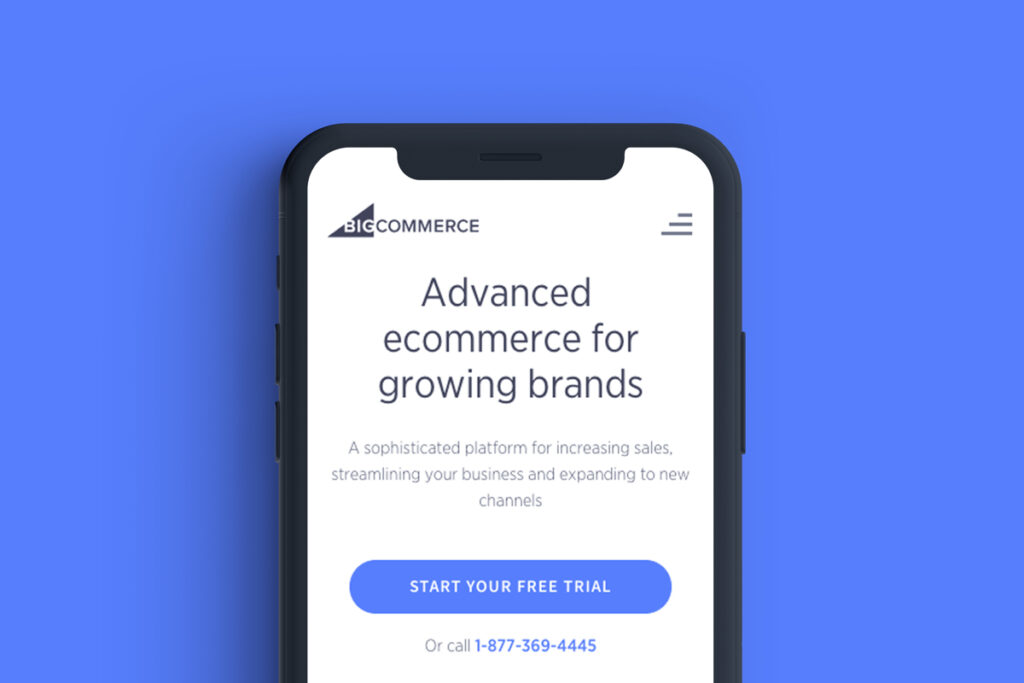
BigCommerce is most comparable to Shopify, since it is also a SaaS platform that you pay monthly for access to their tools and apps. Now, we’ve already touted Shopify as one of the best in the SaaS market, so in what cases would you choose BigCommerce over Shopify?
-
- BigCommerce is adamant about being the best solution for mid-market retail businesses that are bringing in 3M-20M in annual sales. That doesn’t mean they won’t work well for small businesses, but the mid-market companies will notice the advantages of their platforms ability to scale at higher volumes and a more affordable pricing more.
-
- Along those same lines, BigCommerce does not charge a transaction fee. So if you’re not at a high enough volume to be on the Shopify Plus plan, the savings there may enough to justify going with BigCommerce.
-
- If you’re turned off by the added costs of apps or plugins to implement certain marketing features or connect to third party tools, BigCommerce may be a breath of fresh air. Their plans offer some important features right out of the box like faceted search and filters, abandoned cart emails, product reviews, and customer groups and segments. The faceted search and filters is a big one for most retailers. It’s not impossible to offer that feature with other platforms, but it will require an app or custom development.
- And lastly, if you’re using a point of sale like ShopKeep, BigCommerce is the only built-in shopping cart integration that they currently support.
It’s also worth mentioning that in terms of the features that make Shopify so attractive, like discounts on shipping rates, an optimized checkout experience, beautiful themes, a mature marketplace of apps, and integrations with modern marketing tools and other sales channels like Amazon, BigCommerce is right there with them. So it really is not a big step down in that aspect.
If you’re trying to decide between the two, we recommend looking first at your point of sale and inventory control needs and seeing if Shopify or BigCommerce is an obvious winner.
If not, then do the math on what it will cost you to run your store over the first year. Look at the pricing structure for each plus any added costs from transaction fees and apps that you can expect.
If one platform is significantly less, then you should feel confident with choosing that. If they are pretty even, then just go with your gut. Try both out using their free trials and see if one wins out.
Wrapping Up
So there you have it! Hopefully, that helps you simplify your decision and weigh the options for yourself.
It is worth mentioning that we do offer a roadmapping service where we work one on one with you to determine what eCommerce platform will be the best long-term fit for your store. This is often really helpful for the retailers we work with, because we know what to look for and the right questions to ask to determine what’s going to be the ideal solution for you.
The big benefit that has for you is it takes away the risk that you get spend a lot of money to build your online store, only to quickly find out that it’s not going to work, and you either have to start over or migrate to a new platform a year later.
If you’re interested in additional help choosing your ecommerce platform, get in touch today.



